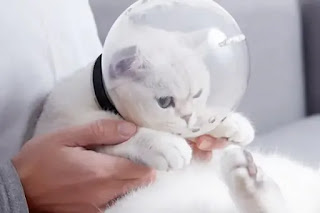Trimming your cat’s nails is important for their health and safety. It is recommended that cat owners trim their cat’s nails every 1-2 weeks. When trimming your cat’s nails, it is important to use the appropriate clippers for the job. If your cat’s claws are long enough to curl into a circle, then scissors-type clippers should be used.
For cats with dark nails, aim to cut at the point where the nail curves or hooks downward. When trimming, use the least amount of force necessary to restrain your cat.Make sure to reward your cat with treats, cuddles, or playtime afterward to end the experience on a positive note.
How do I calm my cat down for a nail trim?
Calming your cat down for a nail trim can be a challenge, but there are a few tips that can help. Play soft music, use feline pheromones such as the Feliway diffuser, and consider using a padded ironing board to do the trimming instead of your lap.
Use treats as a reward but not as a bribe, and always use the least amount of force necessary to restrain your cat. Be patient, stay relaxed, and practice with your cat before you get out of the clippers. Learn to read your cat’s warning signs and take a break if necessary.
What to do if your cat won’t let you cut its nails?
If your cat won’t let you cut its nails, then there are a few things you can do. First, try desensitizing your cat to nail trims by handling its paws and giving it treats, and only trim the nails when it is relaxed. If this does not work, then you can try wrapping your cat in a towel (the kitty burrito approach) and exposing it one leg at a time.
You can also get someone to help you, so one of you can restrain the cat while the other person trims the nails. Another option is to use soft nail caps that are glued onto the cat’s claws so they can’t do any damage when the cat scratches.
How do you immobilize a cat for nail trimming?
Immobilizing a cat for nail trimming is best done using the “towel method”, also known as the kitty burrito approach. To do this, firmly (but not aggressively) hold your cat on a table, place a towel over the cat leaving the head exposed, tuck the towel under the cat bringing the paws close to the body, and pick up the cat in the towel and finish wrapping the cat completely. Release a paw and begin nail-clipping once the cat is in the swaddling position.
Do cats feel pain when trimming nails?
Cats can feel pain when their nails are trimmed if the quick is cut or the clippers are not used correctly. It is important to use the right tools and to cut only the tip of the nail to avoid cutting quickly.
If your cat is anxious or resists, then you should stop and take a break. You can also use treats to reward your cat after the trimming is complete.
How do vets keep cats still with nail clippings?
Vets use a variety of techniques to keep cats still while they are clipping their nails. These techniques include wrapping the cat in a towel, using a specially designed restraint device, using a combination of techniques such as soft pressure and treats, and even using sedatives in some cases.
Vets also use techniques to desensitize a cat to the nail-clipping process, such as handling the cat’s paws and giving treats.
How do you clip a difficult cat’s claws?
Clipping a difficult cat’s claws can be challenging, but there are a few things you can do to make the process easier. First, preparation is key. Make sure to have all of your supplies ready, including nail clippers, styptic powder, a towel or blanket, and calming products. Make sure to minimize distractions and have treats ready.
You can also use flower essences, a ThunderShirt, a massage, a warm towel, and calming treats to help ease your cat’s anxiety. If possible, have someone else around to distract your cat with treats or a toy. Finally, remember to cut only the tip of the nail and to use firm but gentle pressure.


